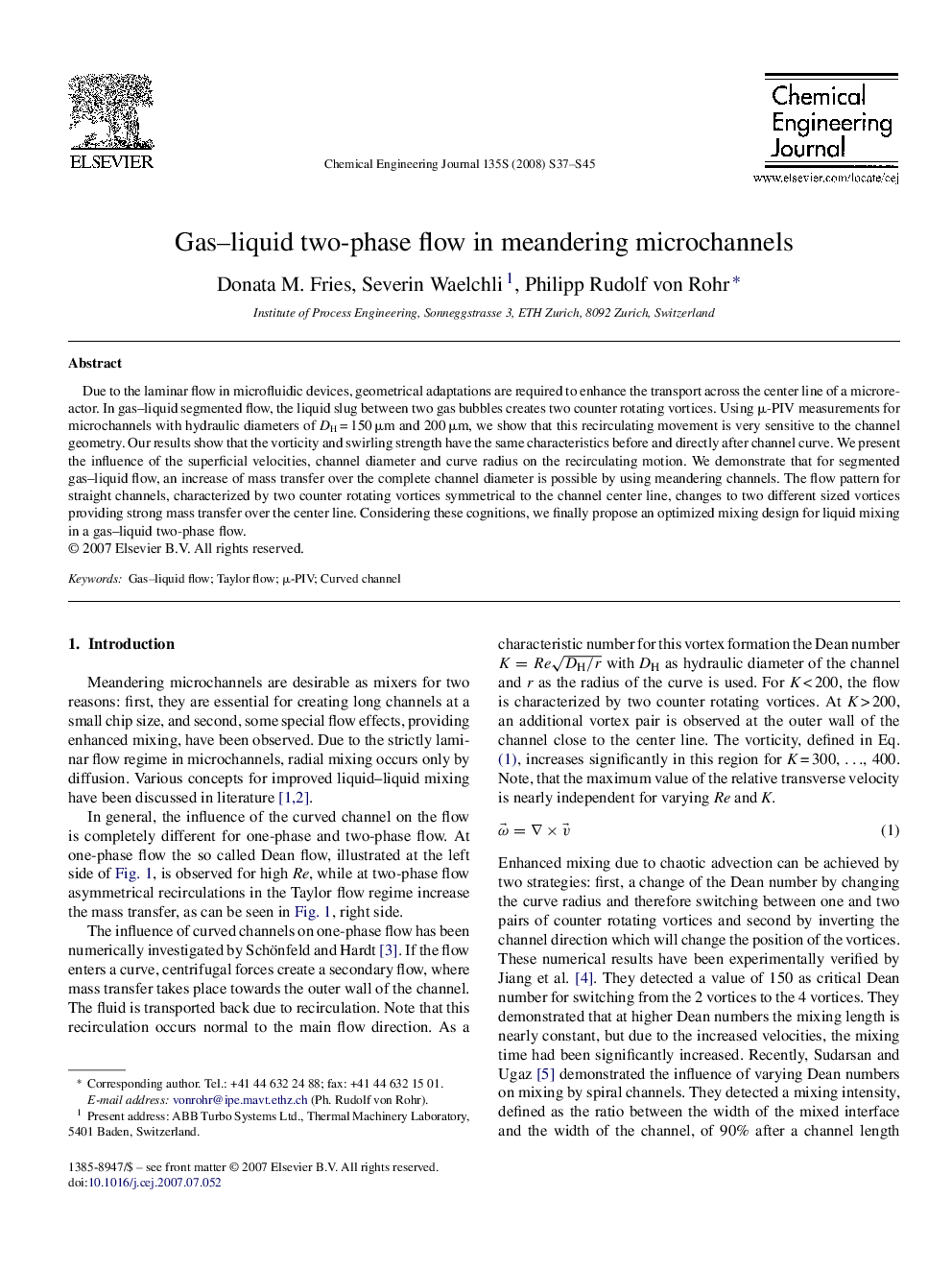| Article ID | Journal | Published Year | Pages | File Type |
|---|---|---|---|---|
| 153707 | Chemical Engineering Journal | 2008 | 9 Pages |
Due to the laminar flow in microfluidic devices, geometrical adaptations are required to enhance the transport across the center line of a microreactor. In gas–liquid segmented flow, the liquid slug between two gas bubbles creates two counter rotating vortices. Using μ-PIV measurements for microchannels with hydraulic diameters of DH = 150 μm and 200 μm, we show that this recirculating movement is very sensitive to the channel geometry. Our results show that the vorticity and swirling strength have the same characteristics before and directly after channel curve. We present the influence of the superficial velocities, channel diameter and curve radius on the recirculating motion. We demonstrate that for segmented gas–liquid flow, an increase of mass transfer over the complete channel diameter is possible by using meandering channels. The flow pattern for straight channels, characterized by two counter rotating vortices symmetrical to the channel center line, changes to two different sized vortices providing strong mass transfer over the center line. Considering these cognitions, we finally propose an optimized mixing design for liquid mixing in a gas–liquid two-phase flow.
